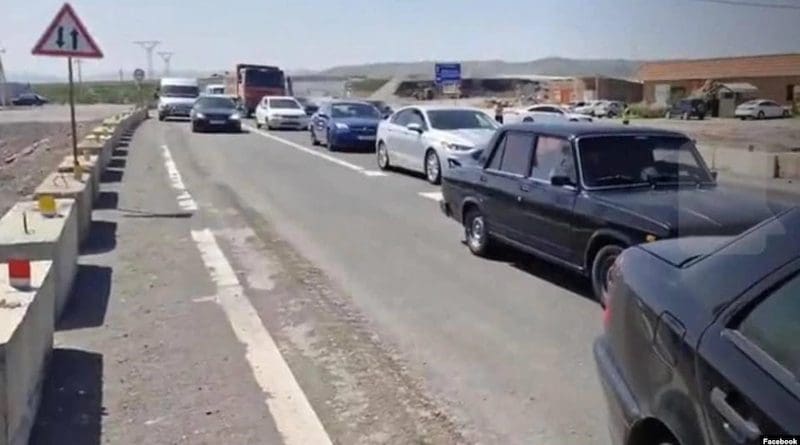Armenia: Protests Continue Against Plans To Cede Territory To Rival Azerbaijan
By RFE RL
(RFE/RL) — Armenians have blocked the Yerevan-Gyumri highway as protests continue against the government’s plans to hand over several border areas to rival Azerbaijan as part of a peace deal.
Images of the protest action that shut down traffic from Armenia’s capital to the country’s northwestern border were posted on the morning of April 28 on the Tavush For The Fatherland Facebook page.
The Martuni-Vardenis highway, linking the two cities near Armenia’s eastern border with Azerbaijan, was shut down overnight.
Earlier this month, residents of several Armenian communities in the northeastern Tavush Province launched protests against the government’s plans to hand over territory close to Azerbaijan’s Qazax region.
Under the border delimitation agreement announced on April 19, Baku will regain control of four formerly Azerbaijani populated villages and surrounding areas in the Tavush region.
The villages were part of Azerbaijan during the Soviet era but have been controlled by Armenia since the 1990s.
The agreement has been hailed by the United States and the European Union, as well as by Armenian Prime Minister Nikol Pashinian, who has been accused by opposition politicians of giving up territory with no guarantees.
In a call with Pashinian on April 28, U.S. Secretary of State Antony Blinken reaffirmed Washington’s support “for progress between Armenia and Azerbaijan on a durable and dignified peace agreement,” the State Department said.
The statement said Blinken reiterated that the United States welcomed the two Caucasus nations’ agreement to use the 1991 Almaty Declaration as a basis for the demarcation of their borders.
“Blinken noted ongoing U.S. efforts to support Armenia’s sovereignty and territorial integrity, and for Prime Minister Pashinian’s vision for a prosperous, democratic, and independent future for Armenia,” it said.
The State Department said Blinken also spoke with Azerbaijani President Ilham Aliyev, praising the agreements between the two sides and urging Baku to “keep up the momentum with his Armenian counterpart.”
Residents of the Tavush region have expressed concern that the border demarcation will block their access to farmland and leave them surrounded by Azerbaijani territory.
The protests spread to Yerevan on April 27, where people carrying banners criticizing the government stormed a concert stage.
Armenia agreed to the handover as the initial step in defining the frontier between the two rival South Caucasus countries.
Armenia and Azerbaijan have fought two wars in the last three decades over the region of Nagorno-Karabakh, which had been a majority ethnic Armenian enclave since the Soviet collapse and is internationally recognized as Azerbaijani territory.
The region initially came under the control of ethnic Armenian forces, backed by the Armenian military, in separatist fighting that ended in 1994.
In 2020, Azerbaijan took back parts of Nagorno-Karabakh along with seven surrounding districts that Armenian forces had claimed during the earlier conflict.
After Baku took full control over the region as the result of a one-day military operation in September last year, nearly 100,000 ethnic Armenians fled Nagorno-Karabakh to Armenia.

